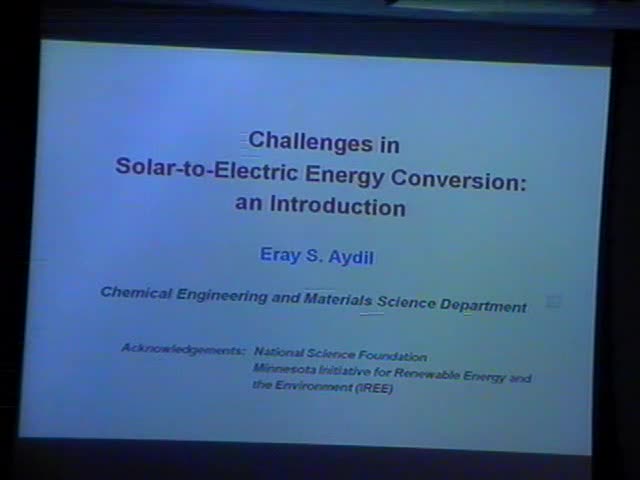Challenges in efficient and inexpensive solar-to-electric energy conversion
Presenter
November 1, 2008
Keywords:
- Energy minimization
MSC:
- 74G65
Abstract
Efficient solar-to-electric energy conversion with inexpensive solar cells and materials is one of the most important challenges we face in the 21st century. Crystalline silicon solar cells based on the conventional p-n junction dominate the solar cell market and are commercially available in modules with 15-20% efficiencies. However, they are still too expensive to manufacture which limits their potential for replacing energy from burning fossil fuels. This established technology faces the challenge of discovering innovative methods for making crystalline silicon at lower cost. Thin film solar cells based on various semiconductors such as copper indium gallium selenide (CIGS), cadmium telluride and amorphous silicon reduce the solar cell cost by reducing the amount of photovoltaic material and the amount of energy required to produce the solar cell. However, either their efficiencies are low compared to crystalline silicon or they are difficult to manufacture on large scale. In addition, last decade has produced a number of new ideas and solar cell designs based on inorganic quantum dots and on organic thin films. These ideas are now at the beginning stages of their technological evolution curves and face challenges ranging from establishing fundamental understanding of their operation principles to improving their efficiencies to levels competitive with silicon solar cells. Regardless of the solar cell technology, a number of different challenges must be surpassed to make electricity from solar energy conversion competitive with electricity obtained from burning fossil fuels. This talk will attempt to set the stage for the workshop by providing an overview of various approaches to solar-to-electric energy conversion and by summarizing the scientific challenges that must be addressed to advance the state of the art in photovoltaics.
